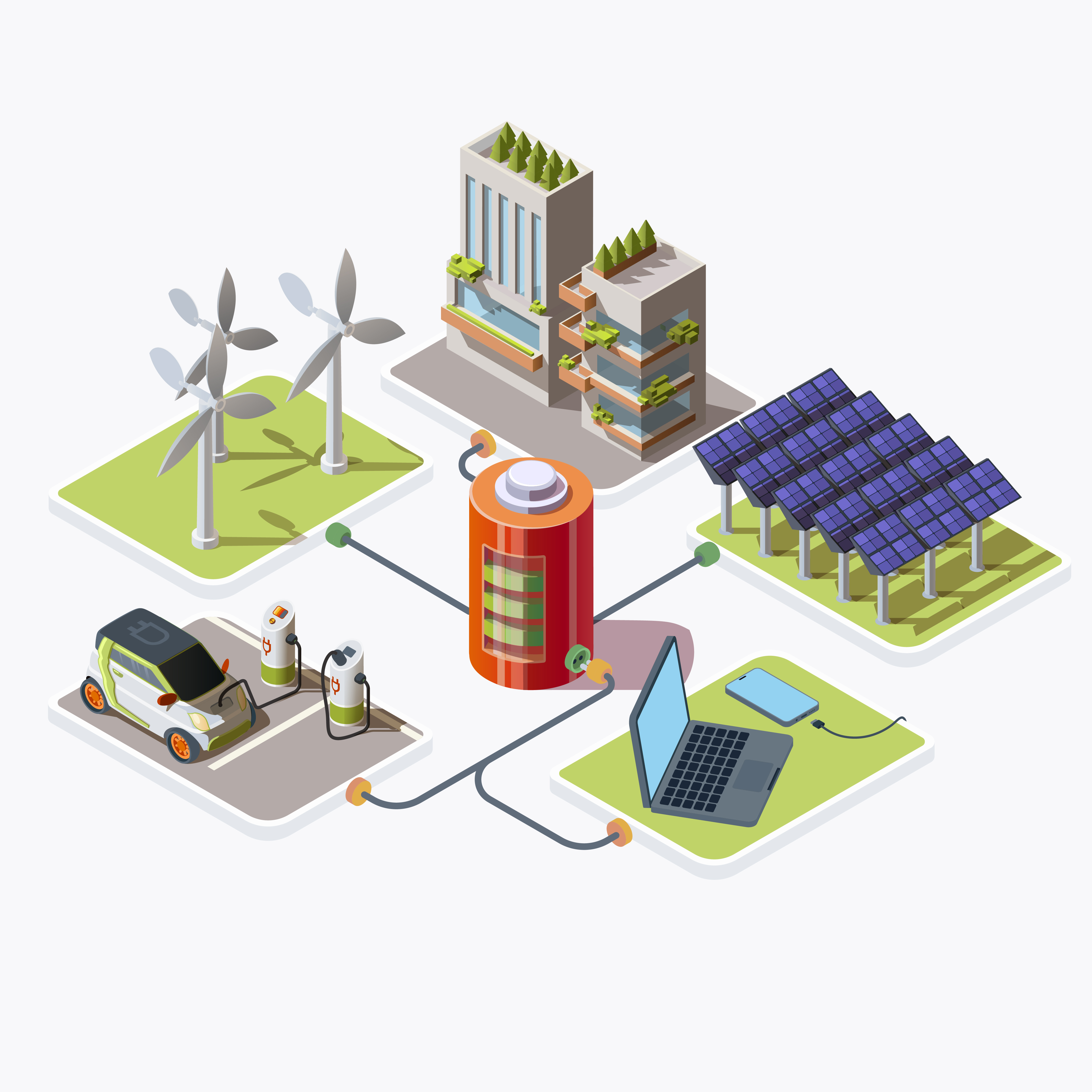Table of Contents
ToggleIntroduction
Electric vehicles represent a paradigm shift in transportation, offering a cleaner and more sustainable alternative to traditional combustion engine vehicles. However, the widespread adoption of EVs is contingent upon the availability of reliable charging infrastructure. At the forefront of this evolution are various charging technologies aimed at enhancing convenience, efficiency, and sustainability. The electrification of transportation is no longer a futuristic concept but a tangible reality reshaping the automotive industry and urban landscapes worldwide. As electric vehicles (EVs) become increasingly prevalent, the need for efficient and accessible charging infrastructure has never been more crucial. This article delves into the evolution of EV charging technologies, exploring current trends and future advancements that promise to revolutionize how we power our vehicles.
Historical Evolution of EV Charging
The journey of EV charging can be traced back to the early 20th century when electric vehicles were in their infancy. At that time, charging methods were rudimentary, often involving direct current (DC) charging from household outlets. Over the decades, advancements in technology led to the development of more sophisticated charging stations capable of delivering higher voltages and currents, thus reducing charging times significantly.
Today, EV charging infrastructure encompasses a diverse range of solutions tailored to meet the needs of different users. From residential charging stations installed in homes to public charging networks spanning highways and urban centers, EV owners have access to a growing ecosystem of charging options. Moreover, the proliferation of standardized charging connectors and protocols has facilitated interoperability between different charging stations and EV models.
Despite the progress made in EV charging technology, several challenges persist. Range anxiety, the fear of running out of battery charge before reaching a destination, remains a significant concern for many prospective EV owners. Additionally, the speed and efficiency of charging processes need further optimization to rival the convenience of refueling conventional vehicles. Addressing these challenges is essential for accelerating the widespread adoption of electric vehicles.
Future Trends in EV Charging
Looking ahead, the future of EV charging holds promise for groundbreaking innovations that could redefine the way we power our vehicles. One such trend is the emergence of wireless charging technology, which eliminates the need for physical cables, offering greater convenience and flexibility for EV owners. Furthermore, ultra-fast charging solutions capable of replenishing EV batteries in a matter of minutes are on the horizon, paving the way for rapid refueling akin to traditional gas stations.
The evolution of EV charging is intrinsically linked to advancements in battery technology. Innovations such as solid-state batteries and increased energy density promise to revolutionize the performance and range of electric vehicles. These next-generation batteries not only offer greater storage capacity but also faster charging capabilities, thereby enhancing the overall user experience and driving adoption. In the quest for sustainability, the integration of renewable energy sources into EV charging infrastructure has gained momentum. Solar-powered charging stations harness the sun’s energy to replenish EV batteries, reducing reliance on grid electricity and lowering carbon emissions. Moreover, smart charging technologies enable dynamic load management, optimizing energy use and minimizing environmental impact.
Role of AI and IoT in EV Charging
Artificial intelligence (AI) and the Internet of Things (IoT) are poised to play a pivotal role in optimizing EV charging processes. Predictive charging algorithms leverage AI to anticipate user behavior and grid conditions, ensuring efficient utilization of charging resources. Additionally, vehicle-to-grid (V2G) technology enables bidirectional energy flow between EVs and the grid, enabling vehicles to serve as mobile energy storage units, contributing to grid stability and resilience.
As the number of electric vehicles on the road continues to rise, the impact on energy grids cannot be overstated. Demand management strategies and grid balancing solutions are essential for mitigating the strain on electricity infrastructure. Moreover, the integration of EV charging with renewable energy sources can help alleviate peak demand and reduce reliance on fossil fuels, fostering a more sustainable energy ecosystem. Government initiatives and policies play a critical role in driving the deployment of EV charging infrastructure. Incentives such as tax credits, rebates, and subsidies encourage consumers to adopt electric vehicles and invest in charging equipment. Furthermore, regulatory frameworks ensure the safety, interoperability, and accessibility of charging infrastructure, laying the foundation for a robust and inclusive EV charging ecosystem.
Integration with Renewable Energy Sources
The integration of EV charging with renewable energy sources holds immense potential for reducing carbon emissions and enhancing energy sustainability. Wind, hydroelectric, and geothermal power offer clean and abundant sources of energy that can be harnessed to power EVs. By leveraging these renewable resources, charging infrastructure can minimize its environmental footprint and contribute to the transition to a low-carbon economy. Urban planning plays a crucial role in shaping the deployment and accessibility of EV charging infrastructure. By incorporating charging stations into existing urban infrastructure, cities can encourage EV adoption and facilitate sustainable transportation options. Furthermore, integrating EV charging with public transportation systems promotes multimodal mobility and reduces reliance on private vehicles, thereby alleviating traffic congestion and reducing emissions.
The widespread adoption of EV charging technology has significant economic implications, ranging from job creation to cost savings. The deployment of charging infrastructure creates opportunities for skilled labor in installation, maintenance, and support services. Additionally, the transition to electric vehicles reduces operating costs for consumers, as electricity is generally cheaper than gasoline, leading to long-term savings over the vehicle’s lifespan. Understanding consumer behavior and charging patterns is essential for designing effective EV charging strategies. Factors such as charging location, duration, and frequency influence user preferences and utilization patterns. By analyzing these trends, stakeholders can tailor charging infrastructure to meet user needs, enhance user experience, and maximize the efficiency of charging resources.
Long-Term Viability of EV Charging Solutions
Assessing the long-term viability of EV charging solutions requires careful consideration of factors such as scalability, durability, and cost-effectiveness. Scalable charging infrastructure capable of accommodating future growth and evolving technology trends is essential for meeting the increasing demand for electric mobility. Moreover, lifecycle assessment helps evaluate the environmental impact and economic sustainability of charging equipment over its lifespan, guiding investment decisions and infrastructure planning.
Achieving widespread social acceptance of EVs and charging infrastructure necessitates a cultural shift in attitudes and perceptions towards electric mobility. By highlighting the environmental, economic, and social benefits of electric vehicles, stakeholders can foster greater acceptance and adoption among consumers. Integrating EVs into mainstream culture and showcasing their viability as a practical and desirable transportation option are essential steps in driving social change and promoting sustainable mobility. The private sector plays a crucial role in driving innovation, investment, and deployment of EV charging infrastructure. From technology companies developing cutting-edge charging solutions to utilities investing in grid modernization and energy storage, private sector stakeholders are essential partners in the transition to electric mobility. Collaboration between public and private entities fosters innovation and accelerates the development and deployment of scalable and sustainable charging solutions.
Role of Startups in EV Charging Innovation
Startups are driving innovation and disruption in the EV charging industry, bringing fresh ideas and solutions to market. From novel charging technologies to innovative business models, startups are pushing the boundaries of what’s possible in electric mobility. Incubators, accelerators, and venture capital funding provide critical support and resources to help startups scale their operations and bring their products to market.
Conclusion
In conclusion, the evolution of EV charging represents a transformative shift towards a cleaner, greener, and more sustainable future for transportation. From technological innovations and policy initiatives to social acceptance and cultural change, the journey towards electric mobility is multifaceted and dynamic. By embracing collaboration, innovation, and inclusivity, stakeholders can drive progress and accelerate the transition to electric mobility, paving the way for a cleaner and more sustainable transportation system for future generations.
FAQs
What are the main challenges in EV charging technology today?
Addressing range anxiety, enhancing charging speed and efficiency, and ensuring interoperability between different charging stations and EV models are among the primary challenges facing EV charging technology today.
How do future technologies like wireless charging and ultra-fast charging promise to revolutionize EV charging?
Wireless charging eliminates the need for physical cables, offering greater convenience and flexibility for EV owners. Ultra-fast charging solutions aim to reduce charging times significantly, making electric vehicles more comparable to traditional combustion engine vehicles in terms of refueling speed.
What role do renewable energy sources play in the evolution of EV charging infrastructure?
Renewable energy sources such as solar power and wind energy are increasingly being integrated into EV charging infrastructure, reducing reliance on fossil fuels and lowering carbon emissions. Solar-powered charging stations, for example, harness the sun’s energy to replenish EV batteries, offering a sustainable and eco-friendly charging solution.
How can public-private partnerships drive the deployment of EV charging infrastructure?
Public-private partnerships (PPPs) leverage resources, expertise, and funding from both government agencies and private sector stakeholders to deploy and operate EV charging infrastructure effectively. By combining public funding and regulatory support with private sector innovation and investment, PPPs can accelerate the deployment of charging infrastructure and promote sustainable mobility solutions.
What are the key considerations for ensuring the accessibility and inclusivity of EV charging infrastructure?
Ensuring equitable distribution of charging stations, addressing socioeconomic disparities in EV adoption, and incorporating accessibility features into charging station design are essential for promoting accessibility and inclusivity. Targeted initiatives and incentives can help bridge the gap in underserved communities and rural areas, ensuring that all residents have access to clean transportation options.







